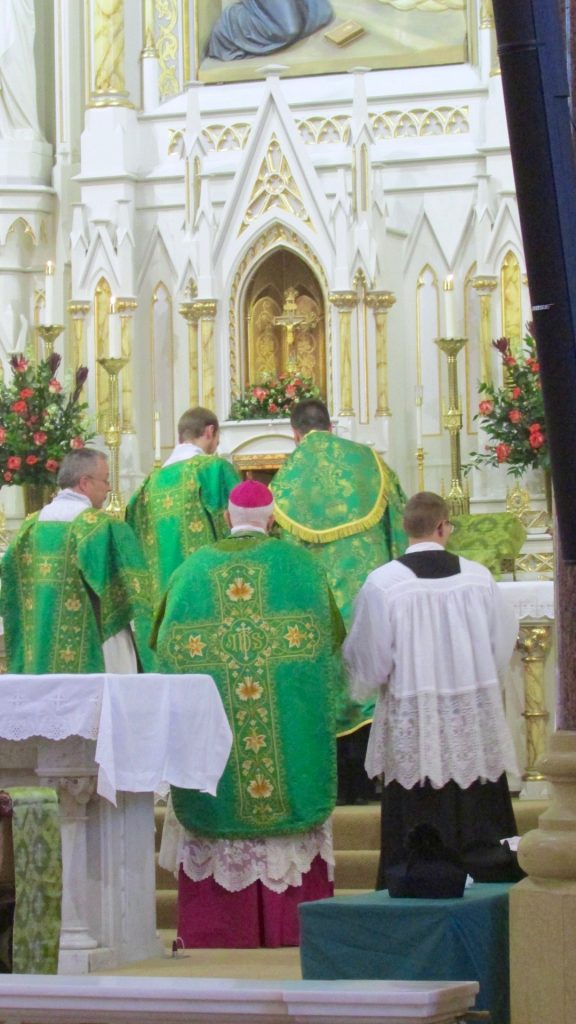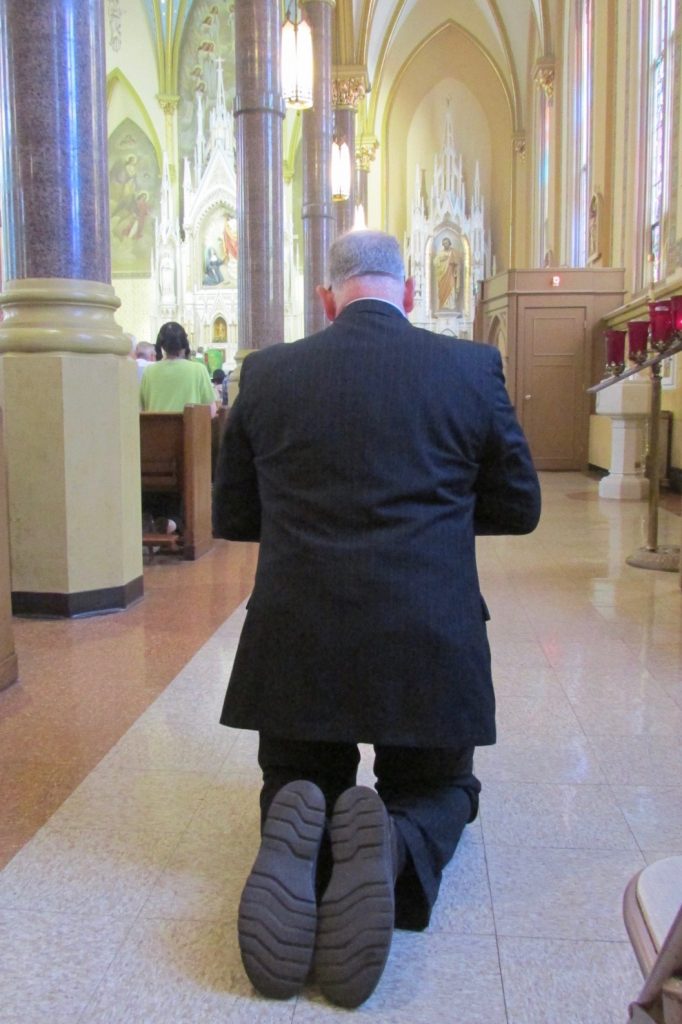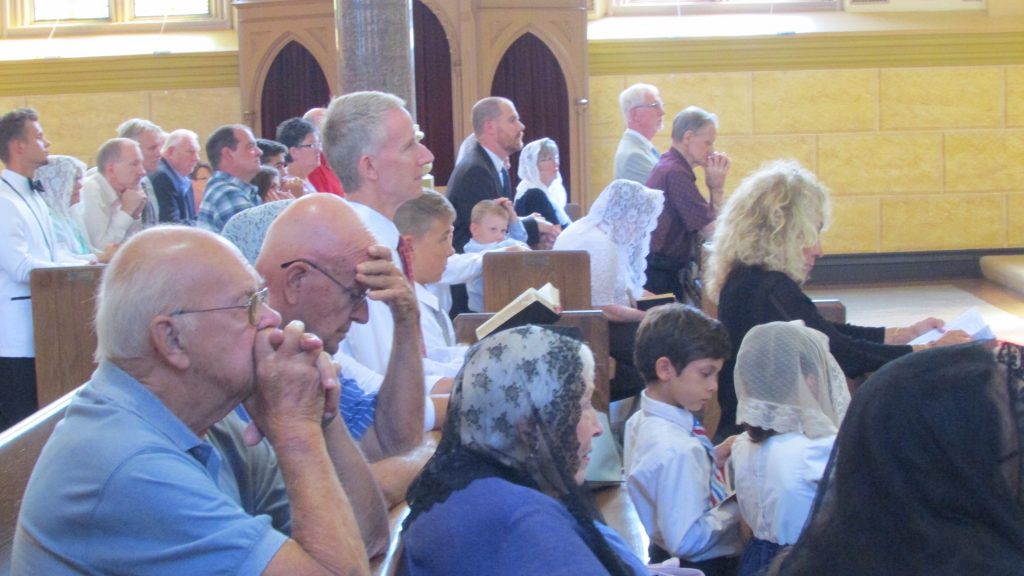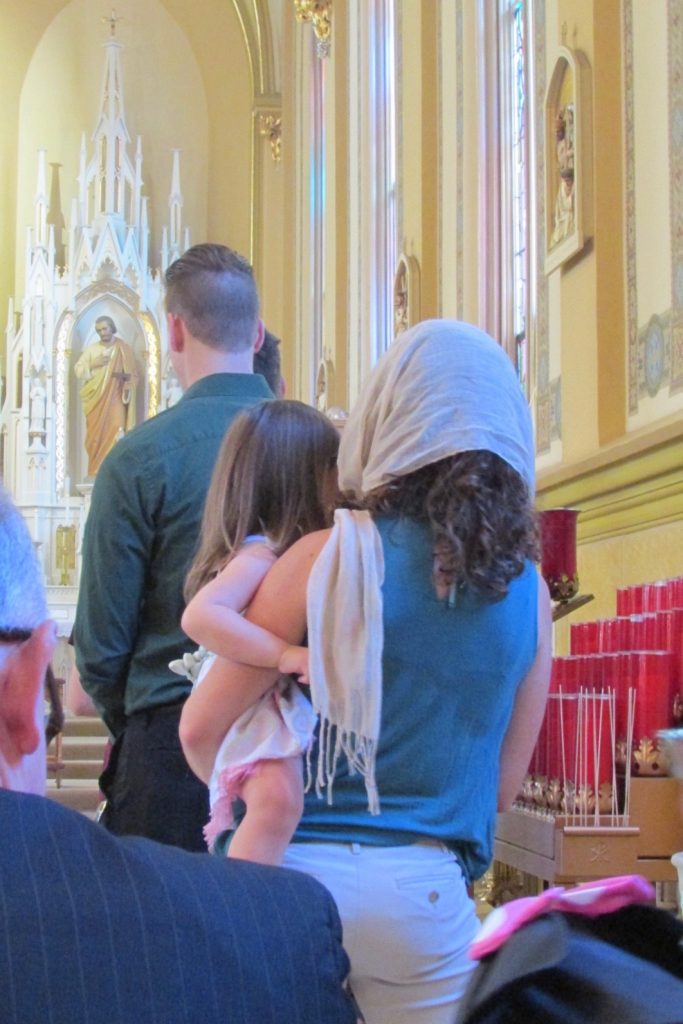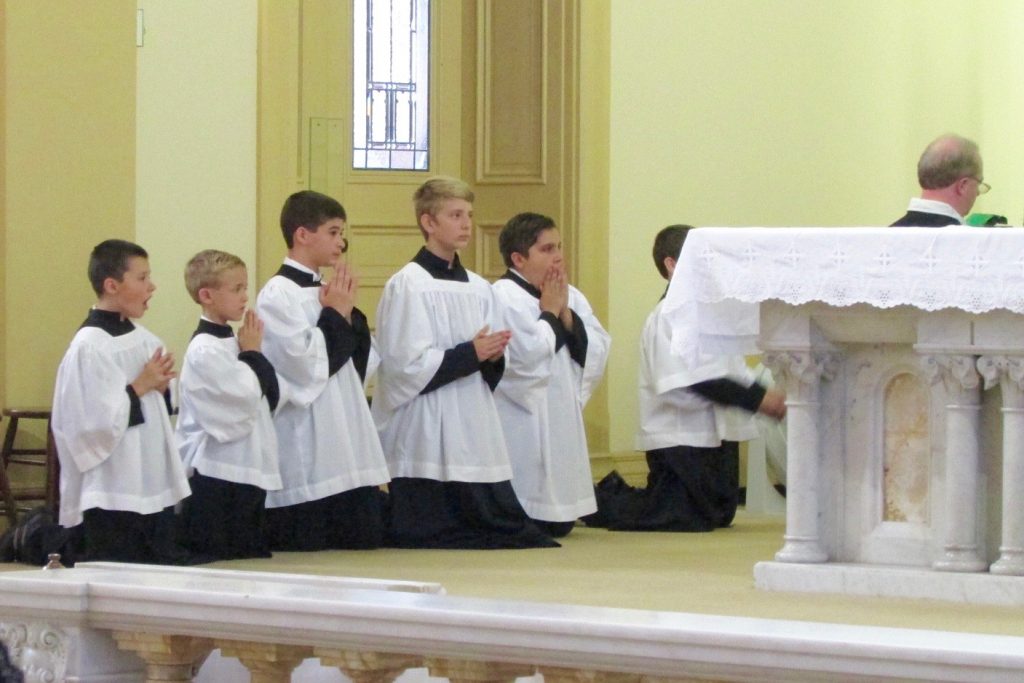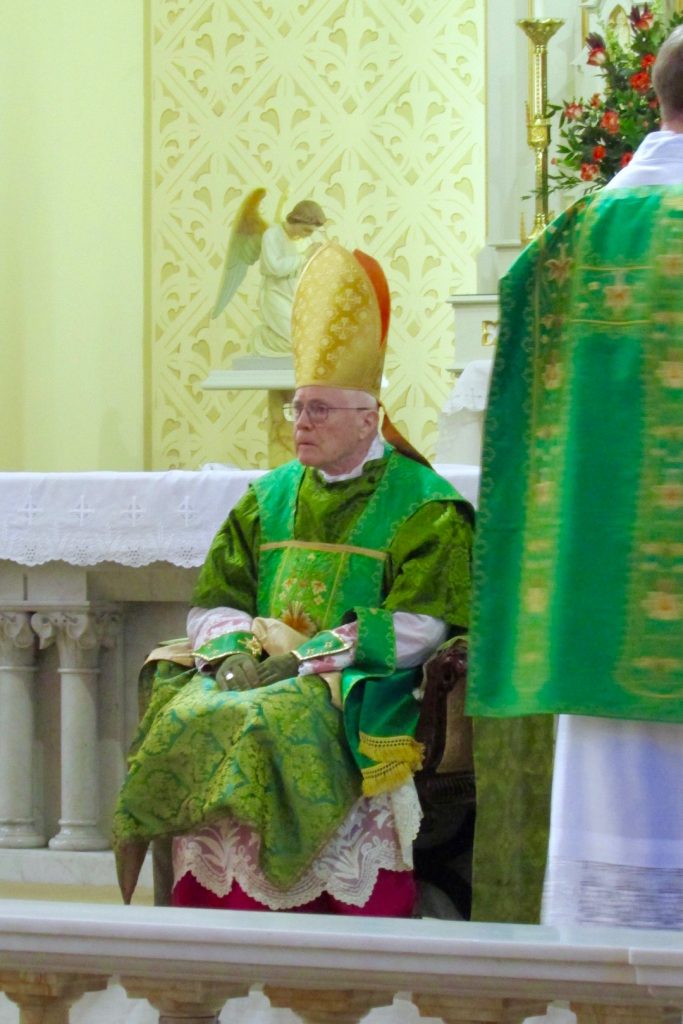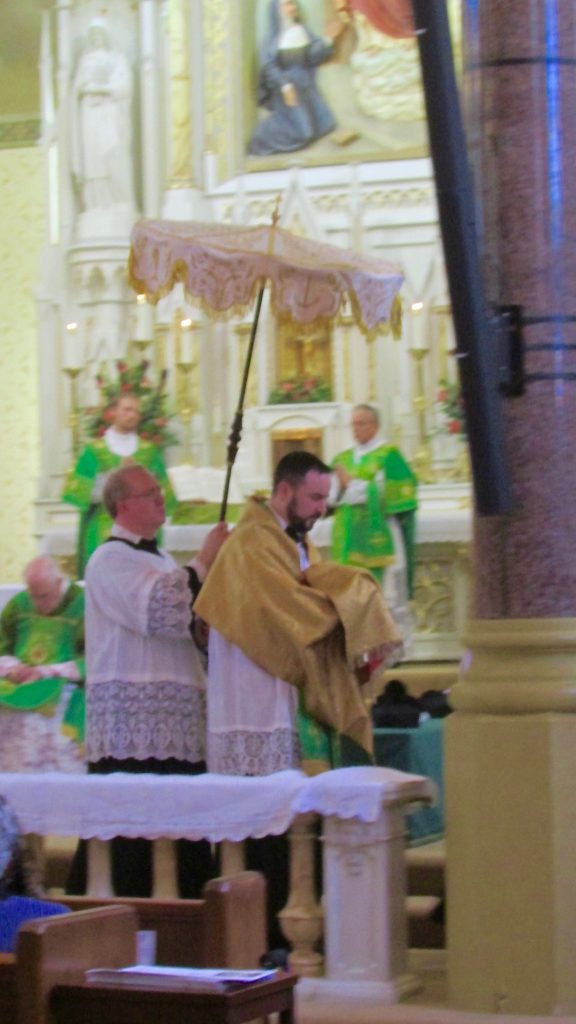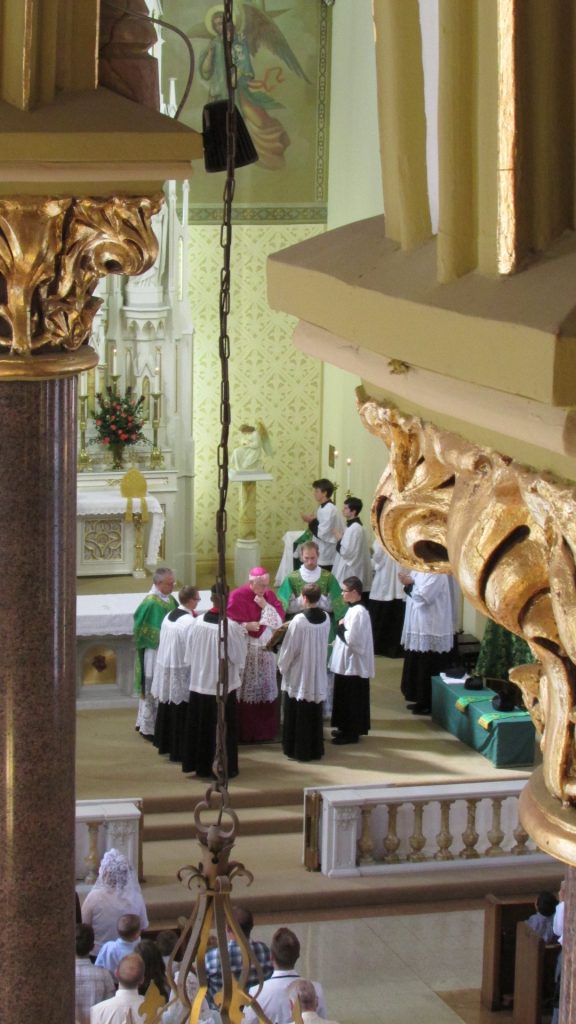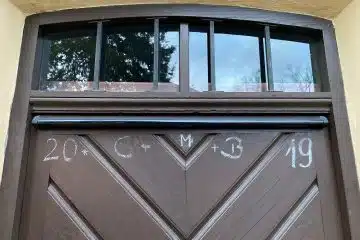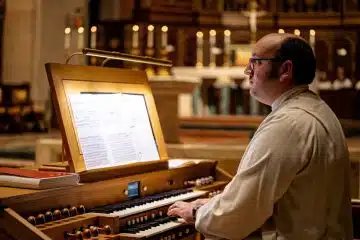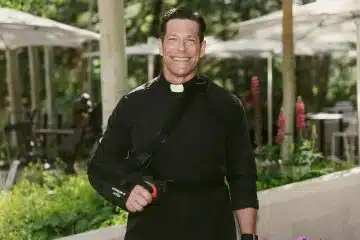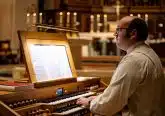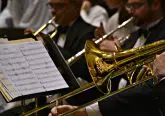Crowds pack rare Latin Masses sponsored by Oratory
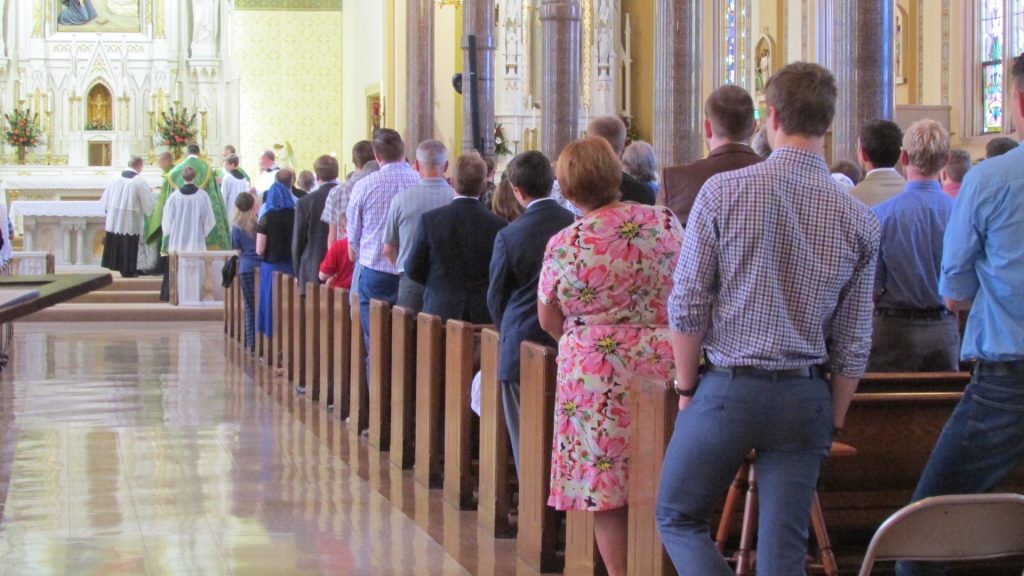
By Gail Finke
Elaborate Latin Masses at two historic Cincinnati churches this month topped off a sacred music retreat for 50 singers from around the country.
Sponsored by the Cincinnati Oratory and its two parishes, the retreat featured Kevin Allen and Nicke Lemme, was coordinated by John Schauble, led by Msgr. Andrew Wadsworth as retreat master, and the retreat was held at the Saint Anne Retreat Center in Melbourne, Kentucky. Allen, of Chicago, is one of the country’s foremost contemporary composers of traditional sacred music. Lemme is the Director of Music at the Priestly Society of St. Peter (FSSP) seminary in Denton, Nebraska. Schauble is the Director of Music for the Latin Mass at Cincinnati’s Sacred Heart Church and director of the Cincinnati Schola. And Wadsworth is a member of the Oratory-in-Formation in Washington, D.C., and director of the International Committee for English in the Liturgy (ICEL).
The retreat centered on the liturgy and music of the Extraordinary Form of the Mass, the Mass in Latin and as celebrated before Vatican II. Unlike a traditional music workshop or series of classes, it also included time for prayer, daily Mass, daily Holy Hours, and the chance to sing the hours of the Divine Office. The goal was to explore “the spirituality inherent in participating in a parish choir,” said Brother Brent Stull, a seminarian for the Oratory who also directs choirs at Old St. Mary’s Church in Over-the-Rhine, “and the desire to seek the glory of God through music and singing and to draw souls to Christ.”
Twenty of the retreat participants came from Greater Cincinnati, Schauble said, and the rest from as far away as California, Texas, and Maryland. “Some were working on Master’s degrees or had Ph.D.s, and some were just choir singers who love to sing,” he said. “They all said they could not believe how profoundly meaningful it was, and many are asking when they can do it again.”
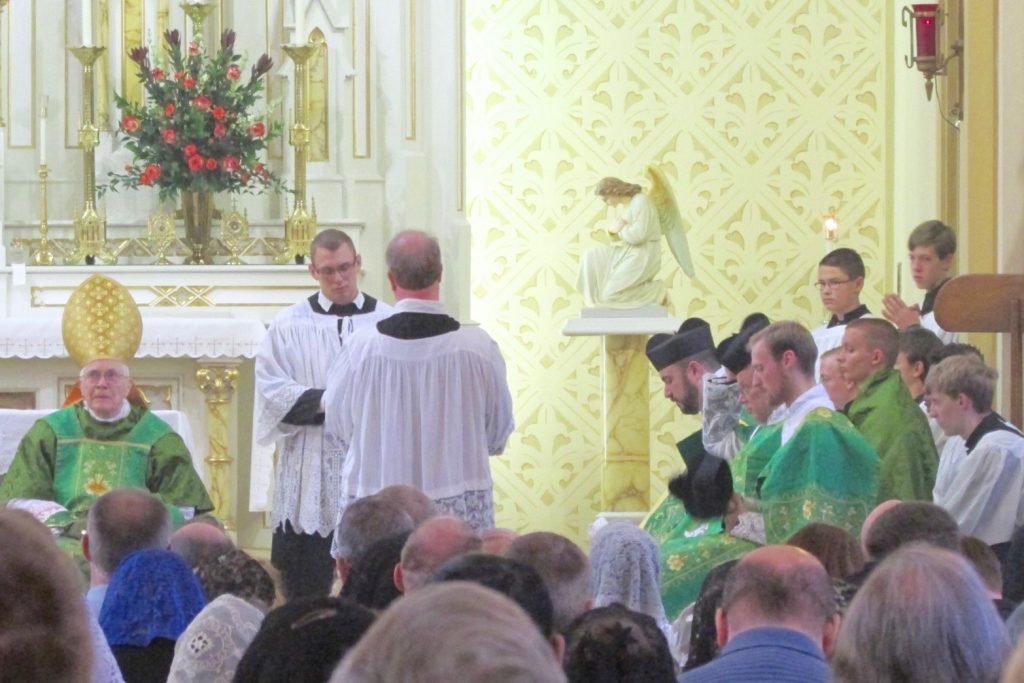
Much of the difference, Schauble explained, came from singing and praying the Divine Office. “The private liturgies were impatctful in ways they had not imagined,” he said. “Choirs sing the Mass, they don’t sing the Hours.” Seeing how the sung Mass fits in a daily pattern of sung prayer, he said, as is still done in many monasteries and convents, changes how a singer understands both the Mass and prayer itself. “Msgr. Wadsworth instruction was phenominal,” he added. “He explained how, for a liturgical choir, understanding the Divine Office is key. Mass is the cornerstone, but the Divine Office surrounds it. Everything before the Mass leads up to it, and everything after it falls away from it. It was very intriguing to a lot of people.”
Bishop Edward Slattery, Emeritus Bishop of Tulsa, Oklahoma, celebrated the two different Latin Masses at the Oratory’s two parishes. These gave the singers a rare chance to sing at these liturgies, rather than perform the pieces at concerts.
Saturday, Bishop Slattery celebrated a Requiem Mass directed by the FSSP’s Lamme at Old St. Mary’s Church. The singers also sang Matins and Lauds for the dead before the Mass, giving many an opportunity to pray these hours with song.
A Requiem Mass features black vestments and a variety of special prayers. Sunday’s Mass at Sacred Heart, directed by Allen, was, instead, a typical pontifical Mass – although today, there is nothing typical about it.
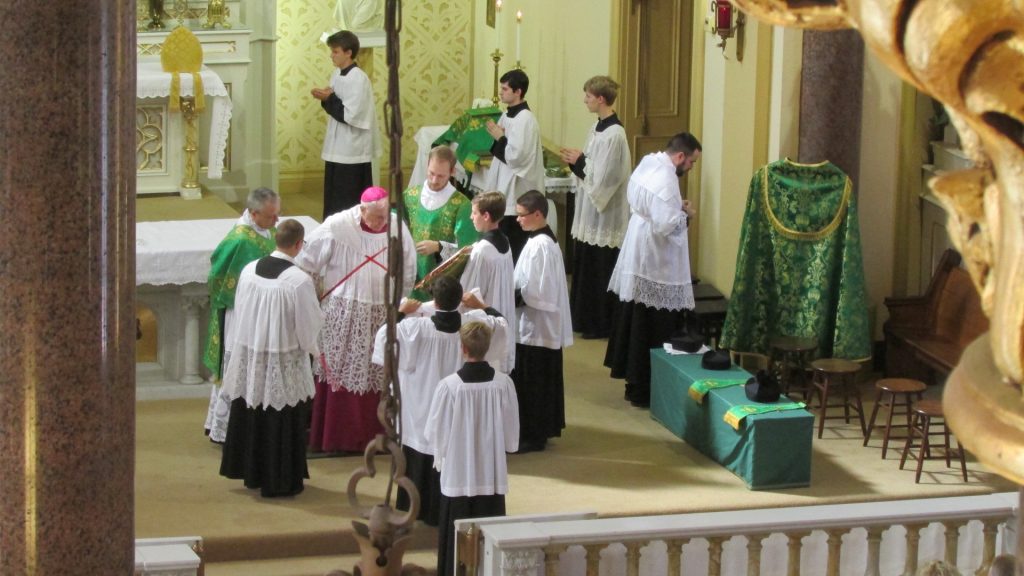
A Pontifical High Mass is the most elaborate of all Latin Masses. The word “pontifical” in this context means “by a bishop,” although it can also mean a Mass celebrated by the pope. It requires a variety of special vestments and crowd of almost 20 men and boys, including a master of ceremonies and a priest who acts solely as the bishop’s assistant.
To be at a Latin Pontifical High Mass is to come as close as possible to participating in the Mass as our medieval forebears did. Brother Henry Hoffman, a seminarian studying for the Oratory, explained that it includes many elements that were dropped from most Masses not atfter Vatican II, but at Council of Trent in the mid-1500s. These include the way the bishop is vested in the sanctuary, “in a manner reminiscent of the way in which medieval kings were vested by their knights in preparation for battle.”
Sitting on a special stool that retains its medieval name of “faldstool” – literally, “folding stool,” a portable type of backless chair — a visiting bishop at a Pontifical High Mass is presented with and helped into a variety of vestments, some of which are rarely seen today. (In his own diocese, the bishop would sit on his throne, an elaborate chair with a tall back.) These include embroidered gloves, an amice and alb (white garments that go under the brocade vestments), and a tunic, dalmatic, and chasuble. These three garments are the garments of the subdeacon, deacon, and priest, and the bishop wears them all to show that “as the successor of the apostles, he possesses the fullness of Holy Orders,” said Hoffman.
Although rare today, being dressed in in elaborate ritual garments as part of a public ceremony is a custom that dates to long before the birth of Christ, Schabule said. “It’s a practice the church took and sanctified.” In the Pontifical High Mass, public vesting over a bishop’s purple cassock and white linen rochet makes visible that the bishop is representing, not himself, but the presence of Christ.
Hundreds of Catholics and non-Catholics crowded both Masses, which featured chant and polyphony in a variety of styles. “As Msgr. Wadsworth put it, the solemn pontifical Mass is the the full form of the Mass,” Schauble said. “It’s the ideal, desired in all circumstances, and everything else is a substitute for it.”
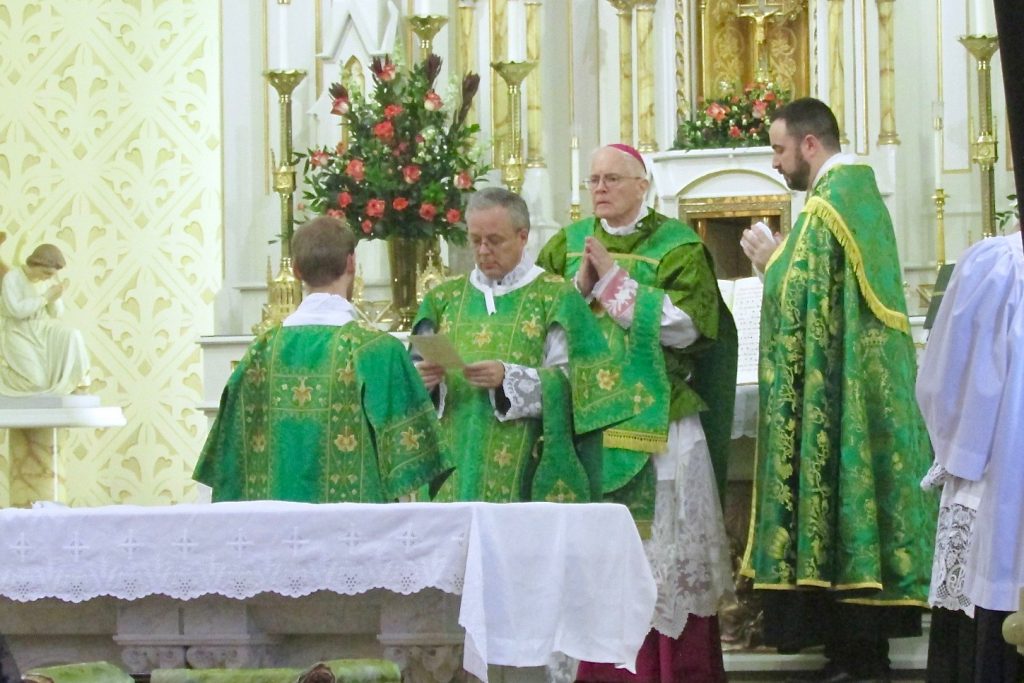
Shauble said that while choirs around the country will benefit from their singers’ participation in the retreat, the Archdiocese of Cincinnati will benefit the most. Half the participants came from the archdiocese and nearby dioceses, including all the singers from Schaubles’ choirs.
“This has given them a completely different perspective,” he said, “and these are already serious singers that keep a pretty intense schedule. I could not have asked for anything more for them, except that they and the other singers would form connections and relationships so that sacred music will grow, not just in one parish, but everywhere. We are making strides in supporting beauty and returning it to its proper place.”
Scroll down for more photos from the Aug. 12 Mass.
